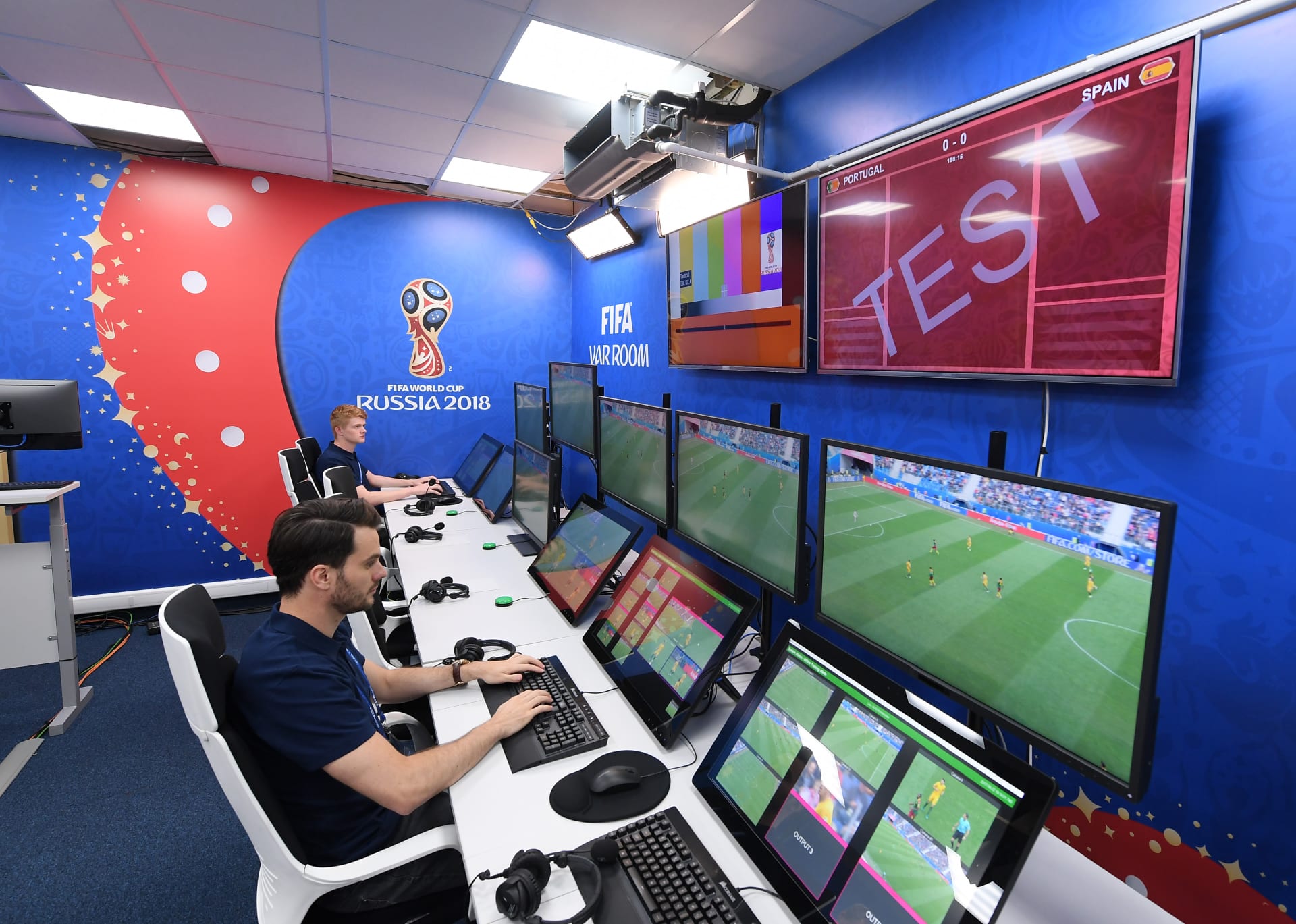دبي، الإمارات العربية المتحدة (CNN)-- في بداية عام 2018 عمل الاتحاد الدولي لكرة القدم "فيفا" على إنهاء حالات الجدل والانتقادات الّتي تلاحق قرارات طاقم حكام المباريات، من خلال إدخال تقنية حكم الفيديو المساعد "VAR"، إذ تتيح لحكم الساحة العودة لمشاهدة بعض الحالات، لاتخاذ القرار النهائي أو العدول عن قرار سابق.
وبعد أن تم اعتماد هذه التقنية في مختلف البطولات حول العالم، كان هناك لحظات جيدة وأخرى سيئة، إلا أنها ساهمت في أكثر من مناسبة في حسم النتائج، وتحديدا في احتساب الأهداف أو إلغاؤها بداعي التسلل أو الخطأ.
ما هي تقنية الـ "VAR"؟
تُعرف بحكم الفيديو المساعد، عبارة عن غرفة مزودة بشاشات موصولة بكاميرات تصور المباراة من زوايا مختلفة، ويتواجد فيها 3 حكام، يقدمون المساعدة والمشورة لطاقم الحكام المتواجد في أرضية الملعب، من خلال إتاحة إعادة مشاهدة اللقطات الّتي تحمل الشك.
ويمكن الاستعانة فيها في الحالات التالية: الأهداف والبطاقات الحمراء وركلات الجزاء والتأكد من هوية المخطئ.
أول نسخة في كأس العالم تشهد الاعتماد على تقنية الـ "VAR"
ويُعد مونديال روسيا عام 2018 أول نسخة تشهد الاعتماد على تقنية حكم الفيديو المساعد.
ولجأ إليها طاقم الحكام في أكثر من مباراة، قد ساهمت في احتساب الأهداف وإلغاؤها، وحسمت أكثر من عشر ركلات جزاء، في الوقت ذاته ألغت بعض الركلات بعد أن لجأ الحكم إليها للتأكد من صحتها.
وحققت جزءا كبيرا من العدالة، ولعبت دورا كبيرا في الكشف عن الفائزين في المباريات.
وكانت أول حالة تحكيمية تستخدام فيها التقنية في مباراة فرنسا وأستراليا، في دور المجموعات، إذ تأكد الحكم من وجود مخالفة من اللاعب الإسترالي جوش ريزدون ضد المهاجم الفرنسي أنطوان غريزمان، ليحتسب لصالح الأخير ركلة جزاء.
وكان أول هدف يتم إلغائه باستخدام التقنية في مباراة إيران وإسبانيا، في دور المجموعات، إذ سجل الإيراني سعيد عزت اللهي هدفا في الدقيقة 60، لكن بعد الرجوع للتقنية تم إلغاء الهدف بداعي التسلل، فيما أول هدف تم احتسابه من خلال التقنية كان لصالح كوريا الجنوبية على حساب ألمانيا.
وتدخلت تقنية حكم الفيديو المساعد في مباراة البرازيل وبلجيكا في الأدوار الإقصائية، عندما رفض حكم الساحة احتساب ركلة جزاء لصالح "السامبا"، بعد تدخل المدافع كومباني على قدم المهاجم غابرييل جيسوس داخل الصندوق، عقب التشاور مع حكام تقنية حكم الفيديو المساعد.
وكانت بلجيكا قد تأهلت على حساب البرازيل إلى الدور نصف النهائي بعد الفوز بنتيجة 1/2.
وأثارت هذه التقنية ردود فعل متباينة، وتحديداً بين الجماهير المغربية والجماهير الإسبانية، إذ لجأ إليه الحكم للتأكد من صحة هدف منتخب إسبانيا في شباك المغرب في الدقيقة 91، في دور المجموعات، بعد أن رفع الحكم المساعد رايته معلنا عن تسلل، لكن الحكم قرر أن الهدف صحيح.
وكانت جماهير "الماتادور" ممتنة للتقنية، بينما جماهير "أسود الأطلس" هاجمت التقنية وآلية استخدامها في المونديال.
اعتماد تقنية "شبه آلية" لكشف التسلل في كأس العالم
لم ينته الأمر عند تقنية حكم الفيديو المساعد، بل صادق "فيفا" على اعتماد تقنية أخرى، وهي "شبه آلية" لكشف التسلل في مونديال قطر 2022، للمرة الأولى.
وتستخدم هذه التكنولوجيا الجديدة 12 كاميرا تُثبت أسفل سقف الاستاد بهدف تتبع حركة الكرة، وما يصل إلى 29 نقطة بيانات تعمل بسرعة 50 مرة في الثانية، مخصصة لكل لاعب في أرضية الميدان، وذلك من أجل احتساب الموقف الدقيق الّذي تواجد فيه اللاعبون، كما تشمل نقاط البيانات هذه أطراف اللاعبين وحدودها المعنية بوضعية التسلل.
